10 Crazy VR And AR Headsets At CES 2018
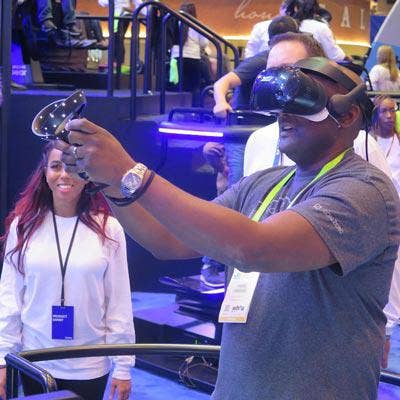
Going Virtual
At CES 2018, the evidence was everywhere that reality-altering headsets are starting to mature. Headsets offering experiences in virtual, augmented and "mixed" reality were once again prevalent -- and in our demos of the headsets around the show, we found many to be highly refined and impressive. But the maturing of VR and AR doesn't make it any less crazy. If anything, it's just the opposite: The better that altered-reality headsets get, the crazier they are to experience.
What follows are 10 of the best reality-altering headsets on display at CES 2018 in Las Vegas.
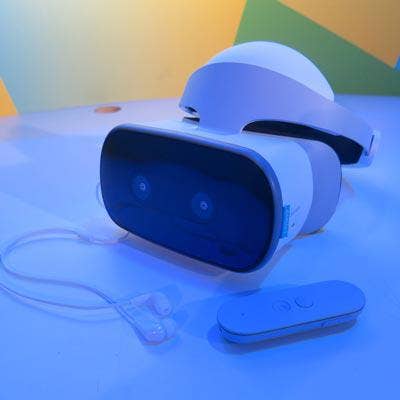
Lenovo Mirage Solo
At CES 2018, Lenovo unveiled its Mirage Solo virtual reality headset, the first stand-alone headset running Google Daydream. That means that unlike other Daydream headsets, the Mirage Solo won't need an Android smartphone to power it. The headset also doesn't require extra sensors or cords to track head movements, which is another differentiator from many other VR headsets. For the display, the headset features a 5.5-inch LCD with QHD (2,560 x 1,440) resolution and an impressive 110-degree field of view. And for the processor, the Mirage Solo includes the same chip that powers many of the leading Android smartphones on the market -- Qualcomm's Snapdragon 835. Judging from our highly enjoyable tryout of the headset at CES, it's clear that Lenovo is in contention to become a serious player in the VR space. Lenovo said the Mirage Solo will be priced at less than $400 and will be available in the second quarter of 2018.
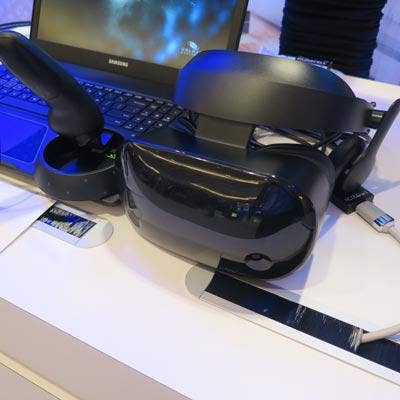
Samsung HMD Odyssey
Our other favorite reality-altering headset at CES 2018 was Samsung's HMD Odyssey. We found the headset to cause much less disorientation -- and better immersion in the virtual experience -- than some of the other headsets on display at CES. Introduced in the fall, Samsung's HMD Odyssey is a Windows Mixed Reality headset that features integrated AKG headphones and vibrant dual 3.5-inch AMOLED displays. The headset enables a high degree of immersion in games and videos with a 110-degree field of view and 360-degree surround sound. The HMD Odyssey also includes two cameras, a built-in microphone, and sensors including a proximity sensor. Importantly, extra motion sensors aren't needed for the HMD Odyssey, unlike with many other head-mounted displays. The Samsung HMD Odyssey is priced at $499.99.

Vuzix Blade
While Google Glass sputtered out of the gate (only a version for enterprises still exists), Vuzix is hoping that its Blade augmented reality glasses can succeed where Google Glass fell short. The Blade glasses provide a display that's overlaid on top of the real world, with information such as directions, alerts or patient data. The glasses stand out from other AR devices with support for Amazon's Alexa digital assistant, which can be used to control the information being displayed on the device's overlaid display. The Vuzix Blade is scheduled to ship in early 2018 and is priced at $1,000.
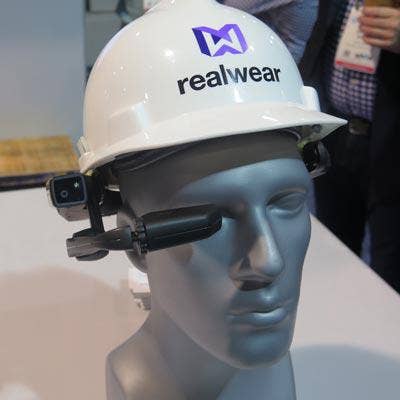
RealWear HMT-1
Another approach to bringing digitally displayed information into workplace scenarios -- as well as voice control -- is RealWear's HMT-1 headset. The Android-powered display can be mounted onto safety helmets or hats, and its display provides an equivalent amount of viewable screen space to that of a 7-inch tablet, according to RealWear. The headset is hands-free and completely controlled by voice, using the company's proprietary technology. The RealWear HMT-1 is available now and priced at $2,000.
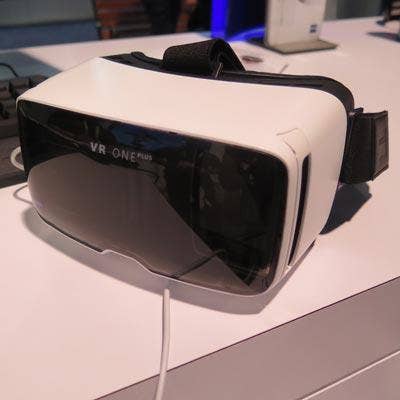
Zeiss VR One Plus
In terms of virtual reality for gaming at CES 2018, Zeiss' VR One Plus was one of the best options we tried for delivering both quality and affordability. The smartphone-powered VR One Plus differentiates by using precision lenses from Zeiss that use the smartphone as the display and keep the cost of the device down. The headset, which can use iPhone or Android smartphones, also offers an impressive 100-degree field of view. And, the VR One Plus now provides access to many SteamVR games, which normally would require buying a more expensive device. The Zeiss VR One Plus is available now, with pricing depending on the retailer (Best Buy is currently selling the headset for $69.99).
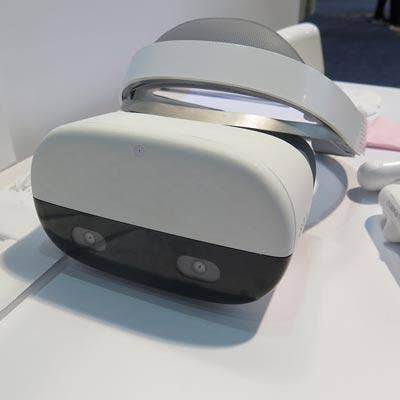
Pico Neo
At the other end of the spectrum for virtual reality gaming is the Pico Neo, a high-end VR headset that offers free movement in all directions (i.e., six degrees of freedom) as a result of not needing external wires or smartphones to power it. The Pico Neo features dual 3.5-inch displays, providing a combined resolution of 3K, along with a refresh rate of 90Hz. The headset is powered by the Qualcomm Snapdragon 835 processor and 4 GB of RAM, and includes a pair of hand controllers. The Pico Neo was one of the best headsets we tried out at CES 2018, with an amazing display and an immersive experience overall that very much transports you (and makes you quickly start to forget where you are). The Pico Neo is currently in pre-orders for $749; estimated shipping dates haven't been disclosed.
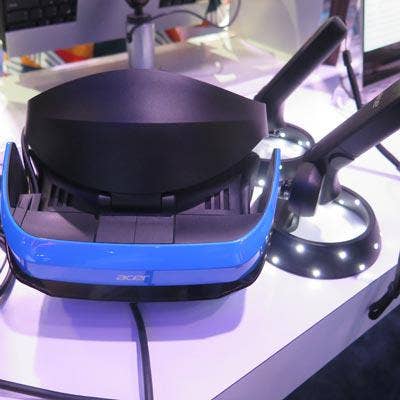
Acer Windows Mixed Reality
Like the Samsung HMD Odyssey, Acer's headset runs Windows Mixed Reality, with the device powered by a compatible Windows PC. A demo of the headset emphasized the ability to be creative in a virtual space, by designing and manipulating digital objects. The Acer Windows Mixed Reality provides features such as inside-out tracking (so that external sensors aren't necessary) and six degrees of freedom. The headset itself includes a "flip visor" so that users don't have to entirely remove the headset to engage with the real world, and can instead just flip up the visor. The Acer Windows Mixed Reality headset is available now, with pricing varying by retailer (Amazon is selling the headset for $219).
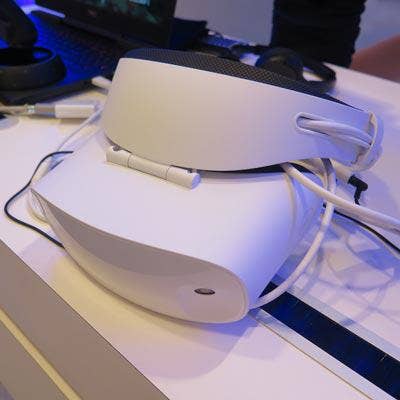
Dell Visor
Another Windows Mixed Reality option is the Dell Visor, which aims to differentiate in part on its comfort: the headset includes an adjustable double-padded headband for more comfortable usage. The Dell Visor also weighs just 1.87 pounds, and includes similar features to the Acer model, with inside-out tracking, six degrees of freedom and a flip visor. The Dell Visor is priced at $350.
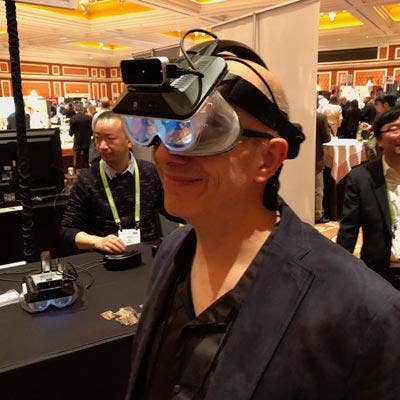
Realmax Qian
One of the coolest augmented reality headsets at CES 2018 was the Realmax Qian, which looks pretty weird from the outside -- but inside offers a stunning experience. Our demo of the headset included viewing a "Finding Nemo"-like world of cartoon fish that was overlaid atop the real world. The vivid display includes 100-degree field-of-view, which manufacturer Realmax says is the highest field of view so far in AR glasses, and the headset includes interactivity through hand tracking and gesture recognition. The Realmax Qian is currently in development.
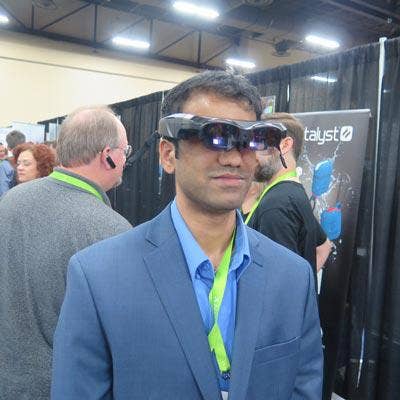
Third Eye X1 Smart Glasses
Launched in connection with CES 2018, the Third Eye X1 Smart Glasses are an augmented reality solution for overlaying live information into settings such as health care, sporting events or education. For instance, the glasses can stream player stats to a fan at a sporting event, with the content viewable by rotating your head. Likewise, in health care, a doctor might walk a patient through how to care for a medical issue using the augmented reality capabilities of the X1 Smart Glasses. Pricing wasn't immediately available for the Third Eye X1 Smart Glasses, with the company saying that most of the solutions are being customized for end users.